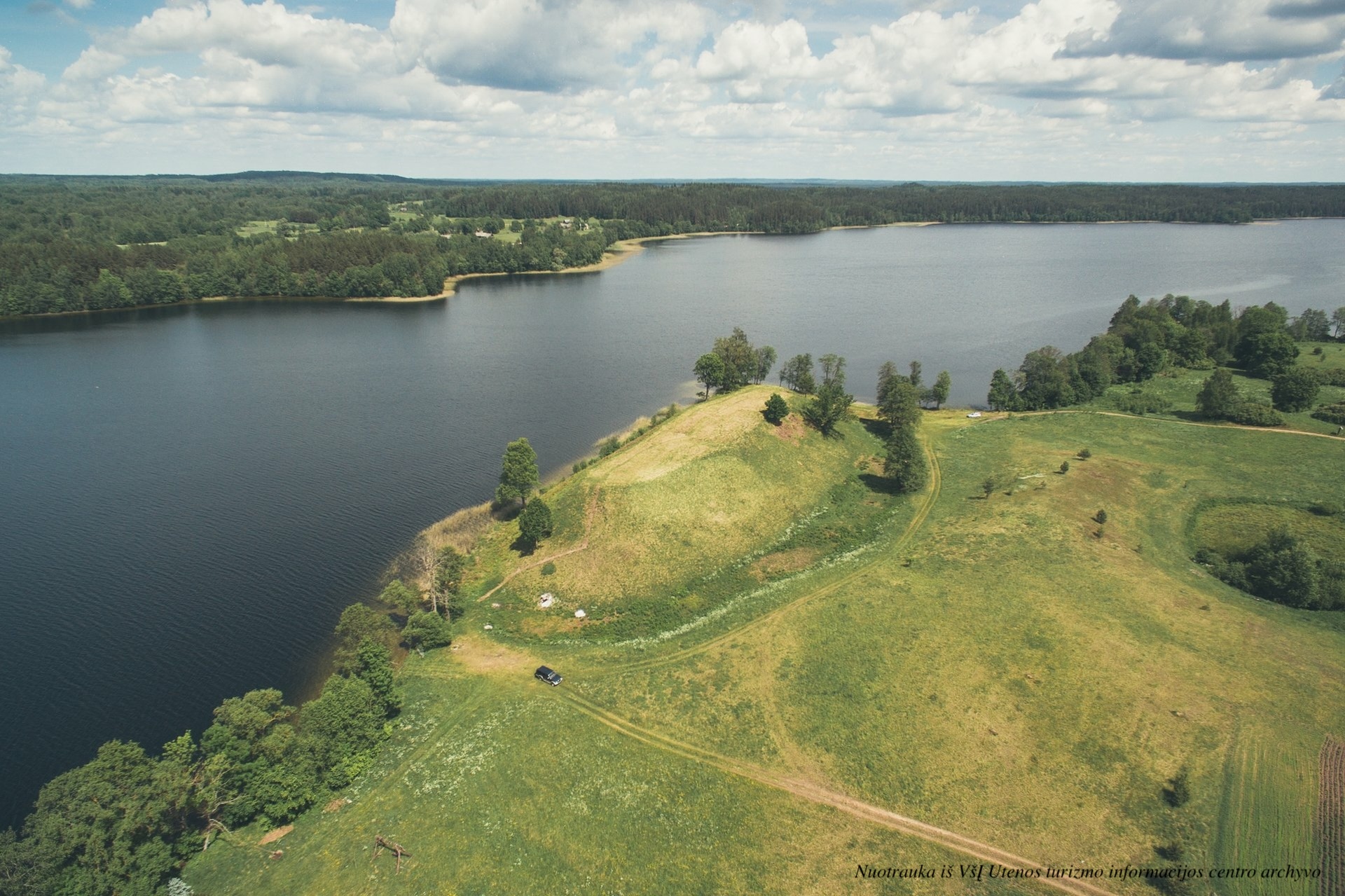Taurapilis Hill Fort

187

0

0
0 out of 5
(0 reviews)
Taurapilis Hill Fort, located on the southern shore of Lake Tauragnas, is a unique archaeological site situated in the Aukštaitija National Park, within the Tauragnas Landscape Reserve. This hill fort is distinguished by its trapezoidal platform, measuring 90 meters in length, with a width of 22 meters at the eastern end and 14 meters on the western side. Protective earthworks have been raised at the ends of the platform, while a defensive ditch further reinforces the western, southern, and eastern slopes of the hill fort.
Info
Taurapilis Hill Fort, located on the southern shore of Lake Tauragnas, is a unique archaeological site situated in the Aukštaitija National Park, within the Tauragnas Landscape Reserve. This hill fort is distinguished by its trapezoidal platform, measuring 90 meters in length, with a width of 22 meters at the eastern end and 14 meters on the western side. Protective earthworks have been raised at the ends of the platform, while a defensive ditch further reinforces the western, southern, and eastern slopes of the hill fort.
The slopes are steep, reaching heights of 13 to 14 meters. Taurapilis Hill Fort, along with the nearby settlement, dates back to the 1st millennium AD and the mid-15th century, with its history extending to the 16th–19th centuries. Archaeological excavations have revealed cultural layers containing remnants of a furnace, various archaeological finds,
as well as uncremated burials, including one grave from the first half of the 16th century.
Taurapilis Hill Fort is a historical symbol of the ancient Tauragnai, where the Tauragnai Castle once stood, mentioned in 1373 when the Livonian Order’s army was encamped nearby. In 1433, the Livonian Order burned down this castle, but legends about a mysterious cursed church beneath the mountain have persisted. It is said that once a brave man looked through a hole in the mountain and saw an abandoned church with crumbling altars, and nearby, the sound of an organ playing. According to the legend, on St. John's Night, precisely at midnight, the mountain opens up, and anyone passing by can see this mystical church and hear the singing, but it lasts only a second.
Due to its historical and cultural significance, Taurapilis Hill Fort has been designated as a monument.
Found a mistake?
Report

 Entertainment
Entertainment
 Sightseeing
Sightseeing
 Food establishments
Food establishments





























 55.448173, 25.86969
55.448173, 25.86969
 Get directions
Get directions









